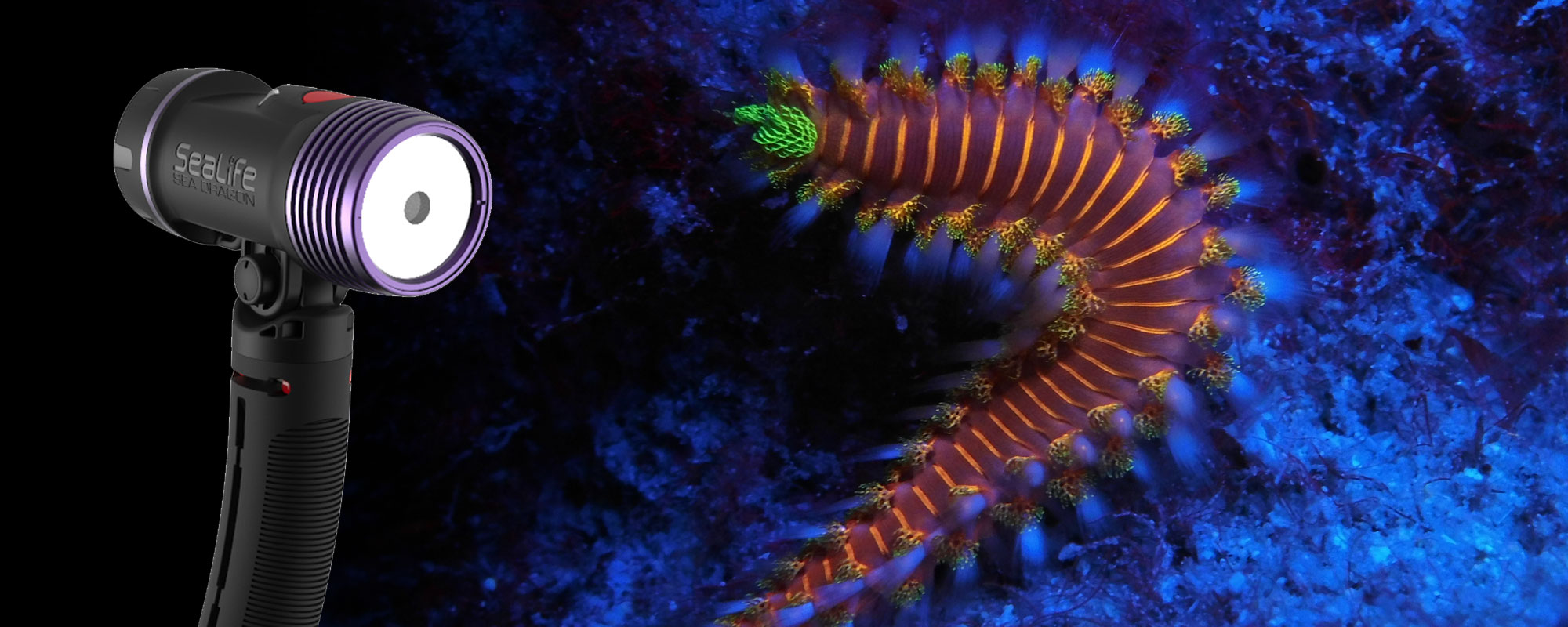Fire Worms make wonderful fluorescent photography targets. They display a full rainbow of colors with very subtle details that create amazing images. They are easy to shoot because they move very slowly. They are more commonly found during a night dives but can be found during the daytime. Fluoro photography is possible in daylight conditions if you work “in the shadows”, during cloudy conditions and at a depth of about 10-15 meters or more. This image was shot at 5 pm in the late afternoon at 50 feet/15 meters.
Location: Cozumel Mexico – Nov 2017
Subject: Bristle Worm / Fire Worm
Camera: SeaLife DC2000
Light: SeaLife Dual Beam Fluoro light
Barrier Filter: SeaLife/FireDiveGear
Camera Settings: Auto Focus, Macro Mode, Manual Exposure Mode, Shutter 1/125 sec, Aperture F:6.3, ISO 800
For More Fluoro Tips, check out these links:


